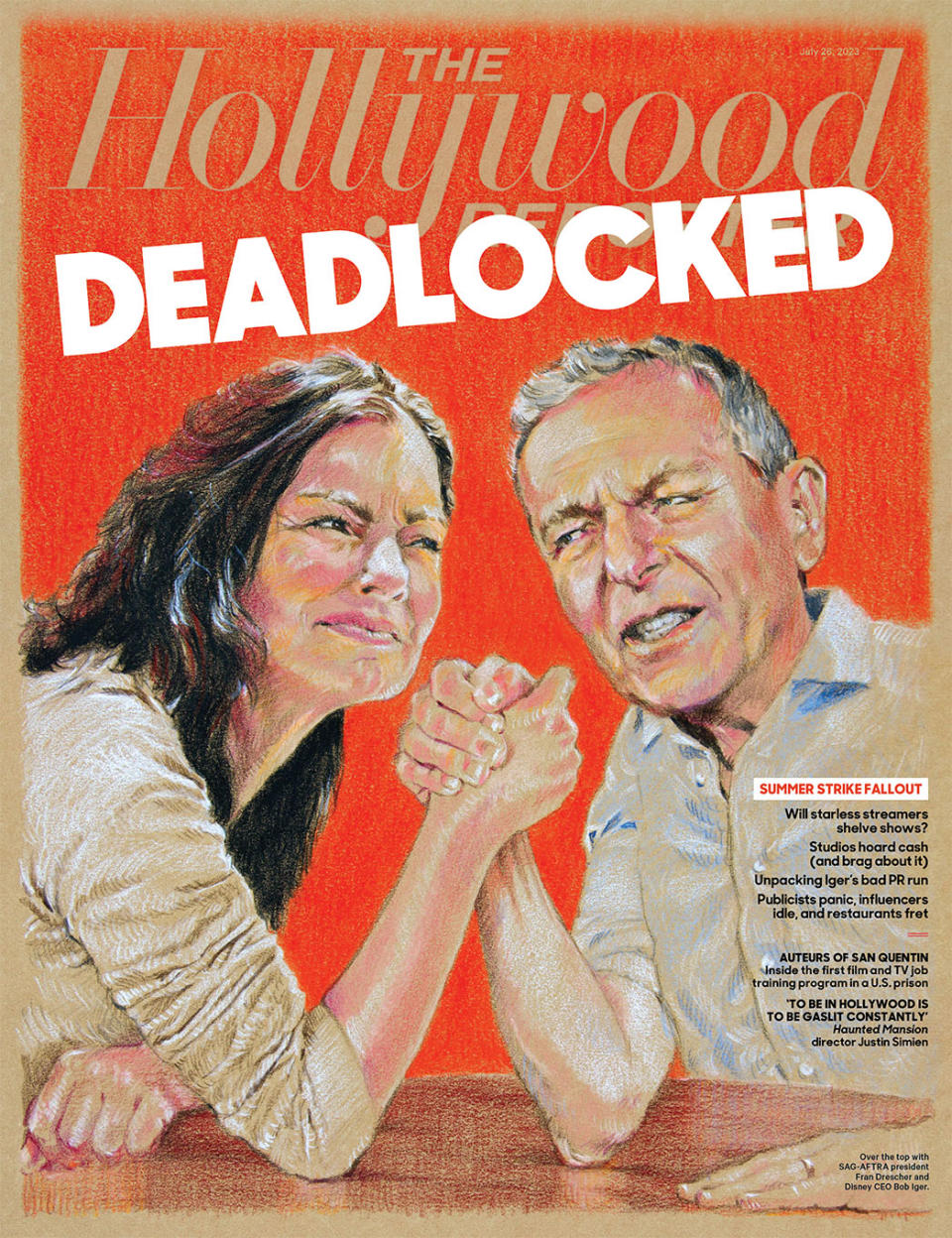As Stars Strike, Streamers Debate Shelving Shows

In executive suites all over Hollywood, the conversation has turned to whether to air or shelve content.
In the wake of SAG-AFTRA’s July 13 decision to join the Writers Guild of America on strike, television executives, like their film counterparts, have found themselves thrust into this debate. Without any clear sense of how long the work stoppage will last, the question becomes: Do you really want to run through what ammo you have so early in the fight? And, for that matter, is it worth rolling out series without stars available to promote them?
More from The Hollywood Reporter
Bryan Cranston Addresses Disney Boss Bob Iger in Passionate Strike Speech
Snoop Dogg 'Doggystyle' Hollywood Bowl Anniversary Show Canceled "Due to the Ongoing Strike"
At multiple streamers, discussions are already underway about potentially moving certain fully shot (but undated) series to early 2024, if not simply benching them until the dual strike ends. In at least a few cases, executives say the stars themselves have asked that their shows be held so that they can be involved in both the promotion and the celebration. (Series with lesser-known talent are more likely to stay put.)
“There are lots of discussions happening around how do we make sure that, at least over the course of the next year, we have a steady cadence of content, even if it’s less content,” says one streaming executive, who notes his outlet is more likely to shelve star vehicles. “And if people weren’t starting to have these discussions, what you’d see is continued launches in Q3 and Q4 and then a very, very steep drop-off in Q1 of next year.”
In the dozen or more conversations that The Hollywood Reporter had with executives across the landscape, one thing became clear: No decisions have been made. This is partly because, some say, many are still holding out hope that the strikes could end quickly. Others are waiting to see what their competitors do, whether the Emmy eligibility cutoff for 2024 is pushed back and if any publicity loopholes emerge, as they did with the writers, who ultimately agreed to grant interviews arranged by personal publicists. (As of now, SAG-AFTRA has barred talent from so much as promoting studio-backed work on social media.) Nevertheless, one Disney source says that they are operating under a worst-case-scenario end date of Jan. 1 as they consider what to do.

The philosophical debate may be the same everywhere, but the platforms vary significantly in terms of how much they have in the can — and, as a result, how much flexibility they have in being able to move or shelve fare. Netflix, which is believed to have the most, is said to be discussing whether to hold as many as five shows that have yet to be dated, according to an insider. Elsewhere, FX is sitting on completed seasons of Ryan Murphy’s Feud: Capote’s Women, which features a who’s who of stars including Naomi Watts, Demi Moore, Diane Lane, Calista Flockhart, Chloë Sevigny and Molly Ringwald, and the latest installment of Fargo, starring Jon Hamm. Neither has been publicly dated, and though both are returning franchises, they’ve been off the air for years. Plus, as one rival exec notes of the former, “Why bother casting all those stars to not have them do press?” (An insider snipes back: “Or you just market the hell out of the fact that you have all those stars.”)
Over at Apple TV+, decisions will ultimately be made about its cadre of star-driven shows, including Bad Monkey (Vince Vaughn) and Palm Royale (Kristen Wiig, Laura Dern), that are in the can. Meanwhile, Showtime has completed seasons of The Curse, starring Emma Stone, Nathan Fielder and Benny Safdie, as well as Matt Bomer and Jonathan Bailey’s Fellow Travelers, while Paramount+ has already wrapped production on its Frasier revival. Even smaller outlets like AMC+ will have decisions to make about when to air shows like Orphan Black: Echoes, starring Krysten Ritter.
Still, as many executives point out, moves must be made with caution, even if doing so can be easier in TV than film, where securing screens is required. For one, platforms want and need a steady supply of fresh content, and there’s plenty, like Hulu’s Only Murders in the Building, that has already been dated and had media spent against it. In fact, many of the series rolling out this summer preemptively banked longer-lead or junket-style interviews with their casts ahead of the SAG-AFTRA strike. (In the case of Only Murders, two people affiliated with the show suggest that a conversation would likely have been had about holding the forthcoming season, which includes starry additions Meryl Streep and Paul Rudd, had it been scheduled for later in fall.)
Given how much focus and fear there is surrounding churn, there is a lot of sensitivity around pushing material. And, as multiple execs note, there’s significant upside to simply keeping shows on cycle, delivering them to audiences when they’ve come to expect them. The danger is one of the most applicable insights from the pandemic, the last time Hollywood’s production spigot was shut off, pointing to examples like FX’s Atlanta or Dave, which took big hits from being off the air for an extended period. Notes one exec, “Holding a show even for a few months could really hurt it.”
This story first appeared in the July 26 issue of The Hollywood Reporter magazine. Click here to subscribe.
Best of The Hollywood Reporter


